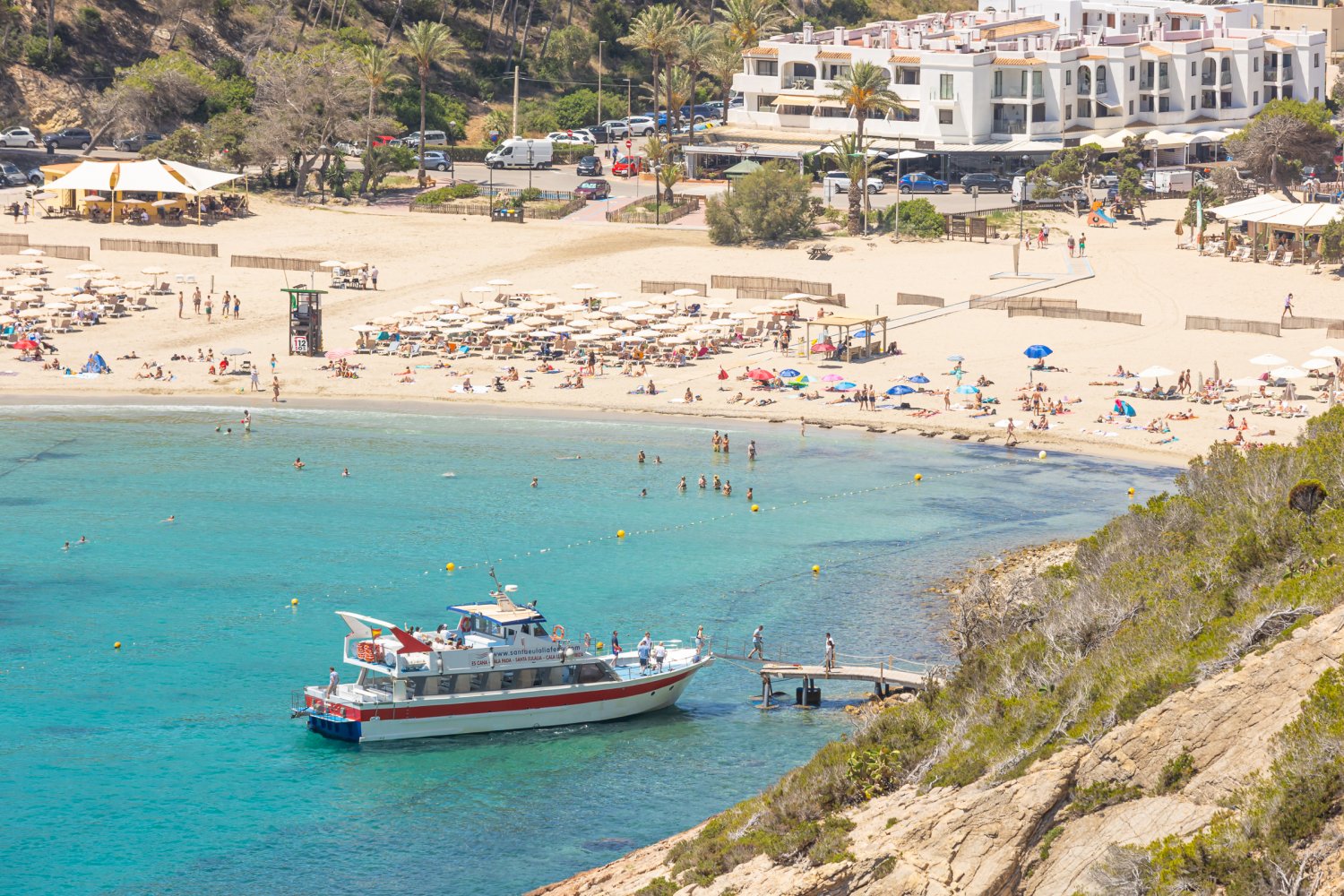Ibiza and Formentera are blessed with many beautiful beaches, directly in the resorts or surrounded only by nature.
In our beach guide, you will find detailed information about each beach on Ibiza and Formentera, with many photos, facilities, how to get there, insider tips, activities, bars and restaurants and much more.
Here we offer you general information about some facts and safety.
How to get there

Ibiza is a relatively small island, even to the most remote beaches it won't take you longer than 45 minutes by car. The easiest way to explore the coastline and beaches is by rental car, although many of the beaches can be reached by regular bus services or local ferries from the major resorts.
Safety

During the summer season from May to October, most beaches on Ibiza are watched over by lifeguards.
Although many of the beaches will rent sunshades and parasols, you are best advised to take your own. The sun is very hot here in summer, and we can't stress enough the importance of shade, especially for young children, babies and the fair-haired.
Never leave bags unattended! Leave your credit cards, passports and tickets in the hotel safe and don't take lots of money to the beach; only what you need for some drinks and lunch. Never leave any valuables in the hire car.
Most of the beaches boast soft, sandy floors that are perfect for splashing around near the shore. Do be careful before rushing and plunging headlong into the water - there are beaches with stones and underwater rocks. Look before you leap!
Average water temperatures
- April 16 ºC
- May 19ºC
- June 22.5ºC
- July 25ºC
- August 26ºC
- September 25ºC
- October 23 ºC
Find here more information about the climate and weather on Ibiza.
Refreshments

Almost all of the beaches have bars or restaurants. On our beach pages, you will find nearby restaurants with our recommendations.
Recycling bins
Recycling bins are now found on all beaches in Ibiza. Colour scheme: blue = paper and cardboard; green = glass; yellow = recyclable materials such as plastic bottles, aluminium and tin cans; grey = general waste such as food and household waste.
Please use them and don't leave anything behind. Please also don't leave any cigarette butts in the sand - they need between 18 months and 10 years (!) to break down, depending on the weather conditions. See this related article.
Thank you for protecting the beautiful nature of the island's beaches!
Smoke-free beaches

More and more beaches on Ibiza and Formentera are assigned to the Balearic Regional Government’s smoke-free beaches programme. We mention it in our detailed information about each beach; furthermore, you will find large signs at the according beaches. Please respect this!
Find an updated list of all smoke-free beaches in this article.
Environment
Information boards

On most beaches, you'll find large signs with useful information about the beach, with a large aerial photo of the area, the facilities offered and details about local flora and fauna.
Posidonia seaweed

On many beaches, you'll find remains of the local seaweed Posidonia Oceanica (aka Neptune Grass) which is found only in the Mediterranean, and of which, there are large protected meadows between Las Salinas beach and Formentera. To find Posidonia or Neptune Grass on a beach is a good sign for its water quality since the plant filters and oxygenates the water, and is thus responsible for the incredibly clear water around our islands.
This type of sea grass is found all over the Mediterranean, but the meadows around the islands are some of the best examples of their kind. Specimens in the meadows around Formentera are 80,000 to 100,000 years old, making it one of the oldest living organisms on the planet! The large Posidonia meadows surrounding Ibiza were declared a World Heritage Site by UNESCO in 1999.
As the meadows are very fragile and easily destroyed by yachts' anchors, they are highly protected nowadays. Boats are forbidden to anchor in zones of Posidonia.
The remains that are washed up on the beach protect the sand from being washed away. For this reason, they are only removed from the beaches during the summer season. And not all of it is cleared away; on the margins of the beach, you still might find piles of dry seaweed - they haven't been forgotten, but rather left on purpose.
Find more information about Posidonia here.
Sand dunes

On Formentera and behind some beaches on Ibiza such as Las Salinas beach, there are beautiful sand dunes, which are protected as they are easily damaged. Please only walk on the signposted paths and wooden boardwalks and do not enter the dunes for walks or sunbathing.
Access for the disabled

Many beaches are accessible per wheelchair via wooden ramps and boardwalks. On several beaches, the lifeguards offer the service to accompany handicapped people into the water, if necessary with the help of amphibious wheelchairs or crutches. Generally, it is best to make an appointment; please speak with the lifeguards and they will happily inform you about the possibilities.
Beaches offering this service are, for example, Santa Eulalia, Es Caná and Cala Llonga on the east coast; Figueretas, Playa d'en Bossa and Las Salinas in the south of the island; and Cala Vadella, San Antonio and Cala Gració on the west coast.
Some beaches also have large covered wooden platforms where wheelchair users and others with impaired mobility can enjoy the beach and sea views in the shade and without having to cross the sand. You will find these, for example, on the main beach in Santa Eulalia, in Cala Llonga, at the south end of Playa d'en Bossa near Nassau Beach Club and at the north end of Es Caná beach.
